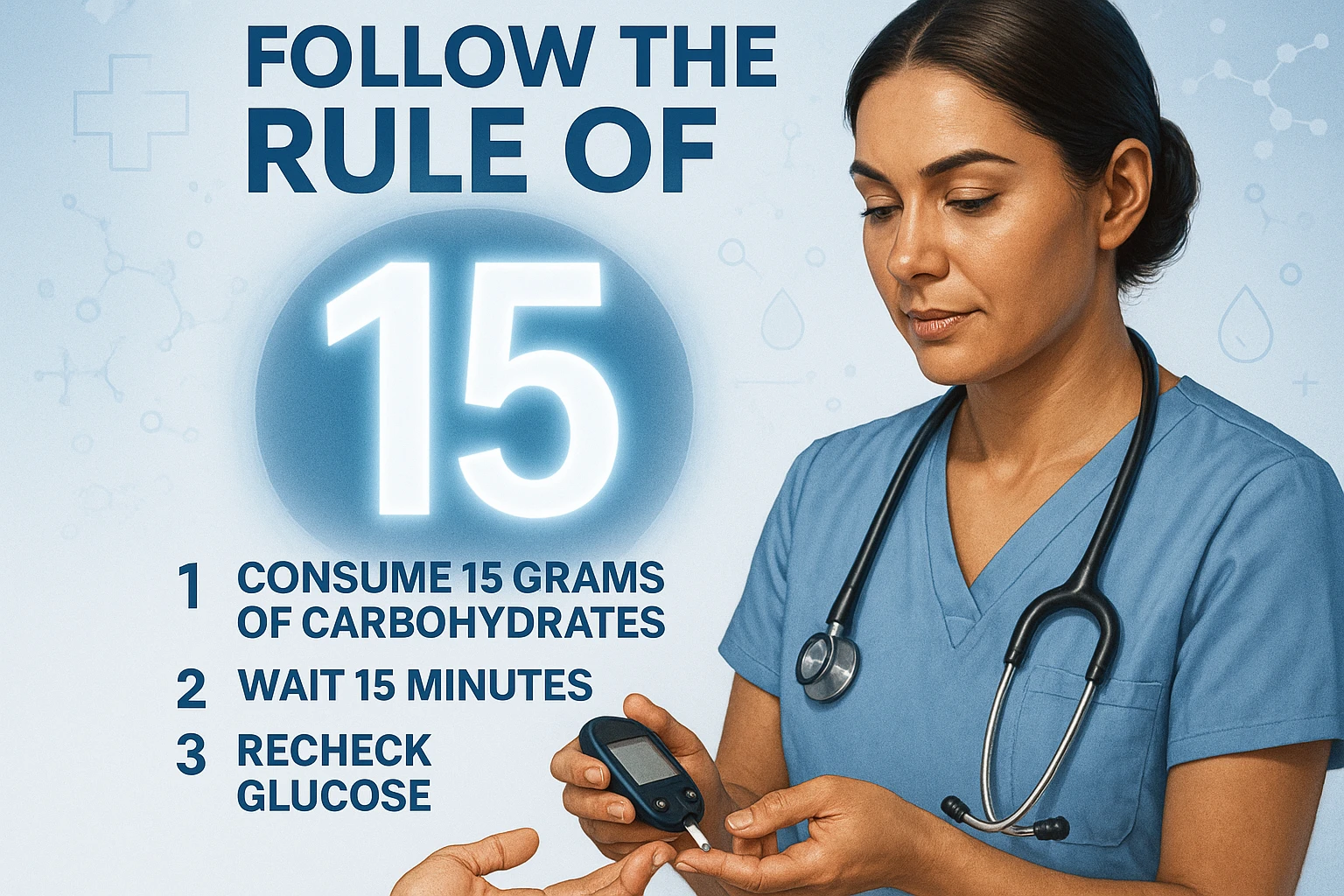Master the Rule of 15 for Effective Hypoglycemia Management
Introduction
Let’s dive into the world of hypoglycemia management – specifically the Rule of 15. This technique is as crisp as a freshly picked apple and just as satisfying when it prevents those dreaded “hangry” moments of low blood sugar. Whether you’re a rookie in the hypoglycemic realm or a seasoned pro, embracing this method can empower you to handle low blood sugar episodes effectively. Here’s everything you need to navigate this crucial aspect of diabetes care.
Key Takeaways
- The Rule of 15 is a simple and effective strategy for hypoglycemia management.
- It involves consuming 15 grams of fast-acting carbohydrates.
- Studies show a 67.5% success rate in raising blood glucose levels.
- Empowering patients with a standardized approach to glucose management.
Table of Contents
What is the Rule of 15?
Fasten your seatbelts, we’re diving into the data on the Rule of 15! This guideline suggests consuming 15 grams of fast-acting carbohydrates when blood sugar levels drop below ideal. Think of it like your blood sugar’s pit crew, quickly refueling to get back on the track!
- Carbohydrates: Quick sugars like glucose tablets or juice work wonders.
- Research shows it restores blood glucose levels to above 70 mg/dL in 67.5% of cases (source).
- Efficient for those with diabetes management plans in place.
How to Implement the Rule of 15
Picture this: a plate full of evidence-based wisdom. To implement the Rule of 15, start with measuring your blood glucose when you feel hypoglycemic symptoms. If levels are below 70 mg/dL, consume 15 grams of carbs, then patiently wait 15 minutes before rechecking your levels.
- This process ensures sufficient glucose absorption.
- Research supports re-evaluation after 15 minutes to avoid “rebounding” (source).
- Repeat if levels remain below target; always prepare for two cycles.
Benefits of Using the Rule of 15
Now, let’s chew on this for a moment: the Rule of 15 not only provides a standardized response to low blood sugar events but also adds a layer of predictability to your health management – a boon, particularly when routines go haywire.
- Structured approach reduces anxiety during hypoglycemic episodes.
- Ensures prompt glucose recovery, minimizing impacts on daily life.
- Reinforces the concept of patient empowerment in diabetes care (source).
Challenges and Considerations
Buckle up, because the research is about to get juicy. While the Rule of 15 is a delightful go-to, it’s not a one-size-fits-all. Some evidence hints that personalized treatments may trump this rule, especially for those requiring different glucose metrics.
- Personalized IV treatments may outperform Rule of 15 in hospital settings (source).
- Some patients may not respond ideally to the standard 15g dose.
- Institutions face hurdles with consistent application in emergencies.
FAQs
What is the success rate of the Rule of 15?
67.5% of patients achieved blood glucose levels above 70 mg/dL using this method. However, outcomes improve with individualized care strategies.
Why wait 15 minutes before rechecking my levels?
This waiting period ensures glucose changes are absorbed fully and prevents unnecessary overconsumption of carbohydrates.
Is the Rule of 15 suitable for everyone?
Not always. Personalized treatments might be more effective for those needing tailored metric adjustments, as some new research is indicating.
Conclusion
From labs to life, understanding and applying the Rule of 15 offers a spoonful of reassurance, helping manage those pesky dips in blood glucose. While it’s an effective strategy for many, always remember: your health is personal, so tailoring your approach is key! Explore complementary strategies, talk to your healthcare provider, and embrace the adventure of informed, empowered health management—here’s to balancing blood sugar while savoring life’s sweetness!


Leave a Reply